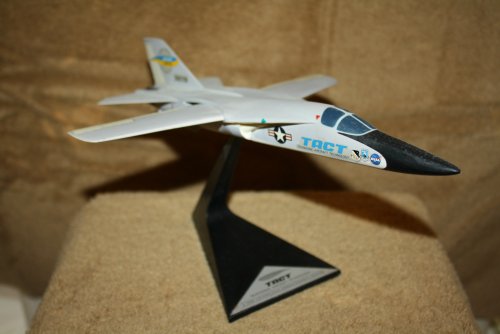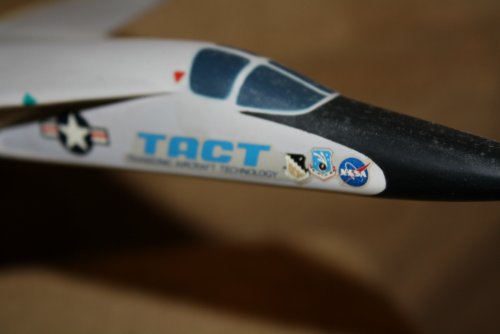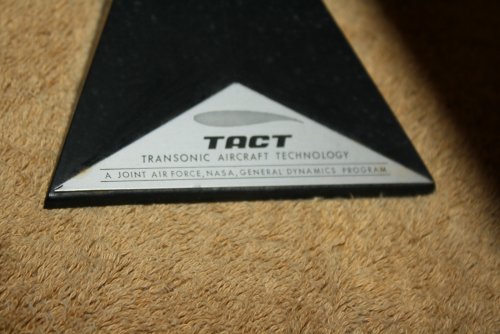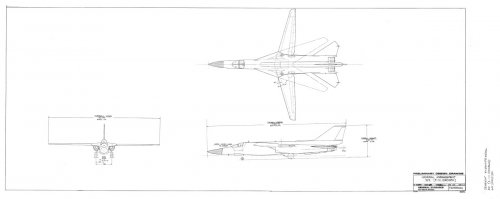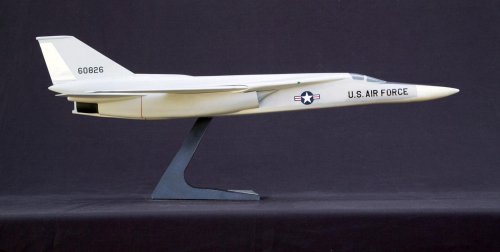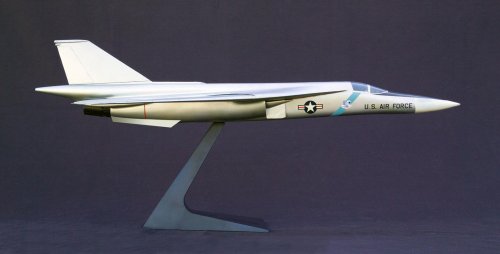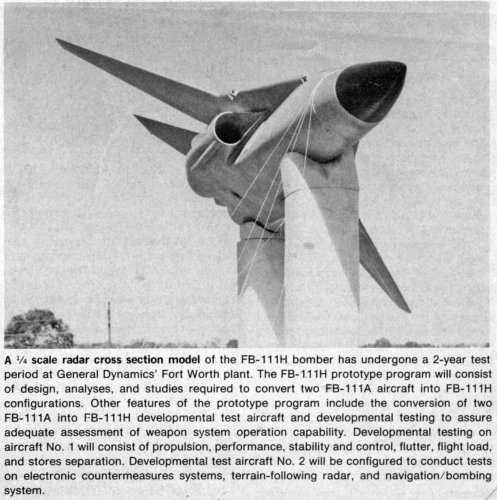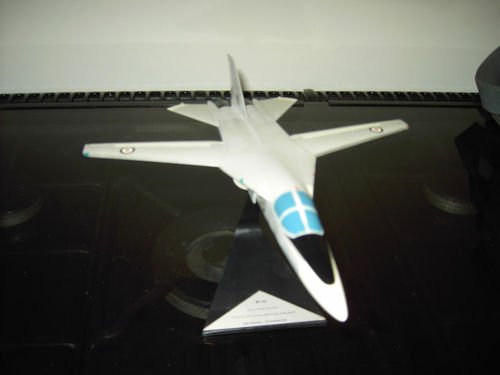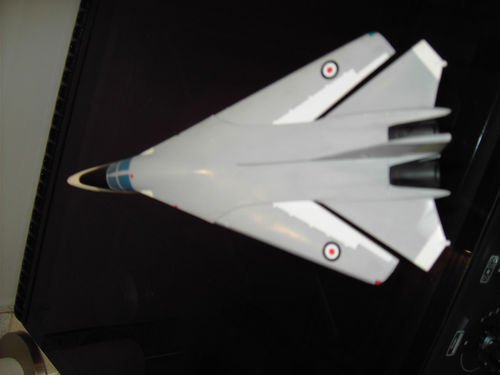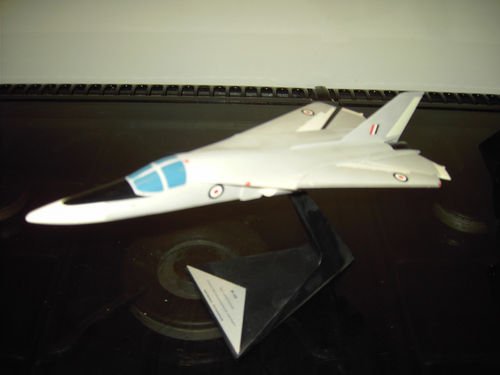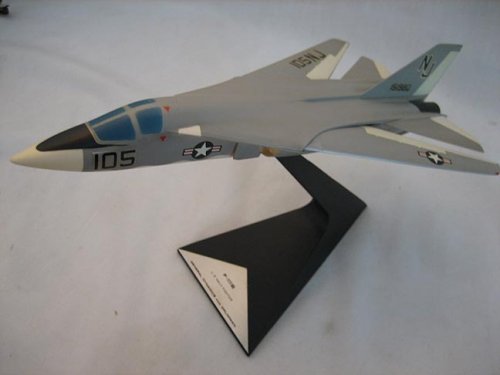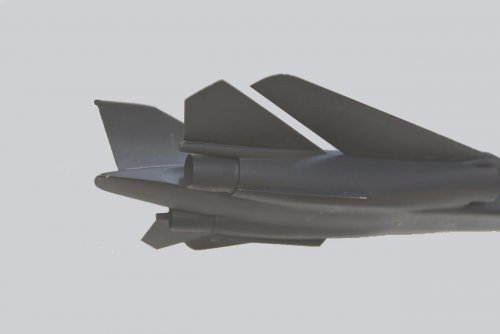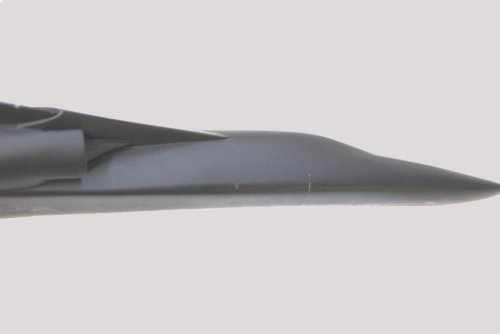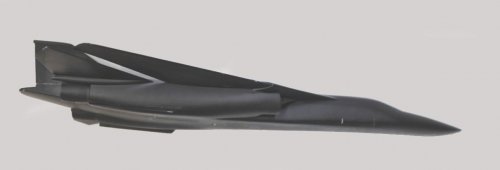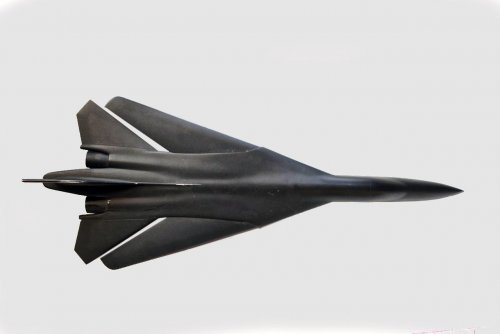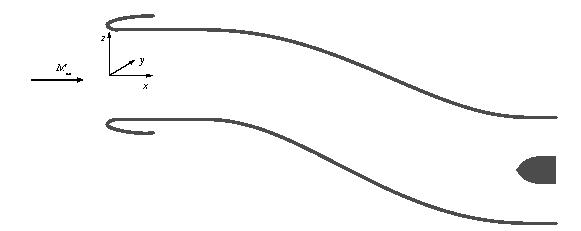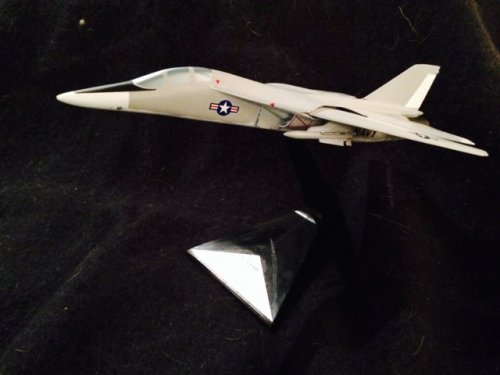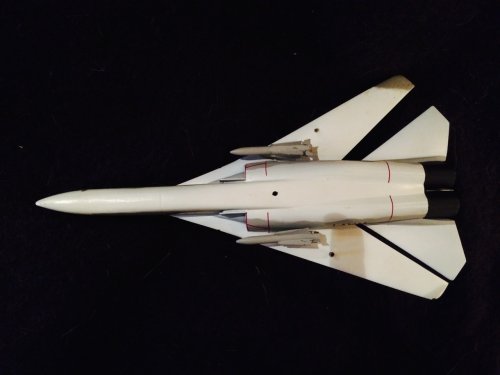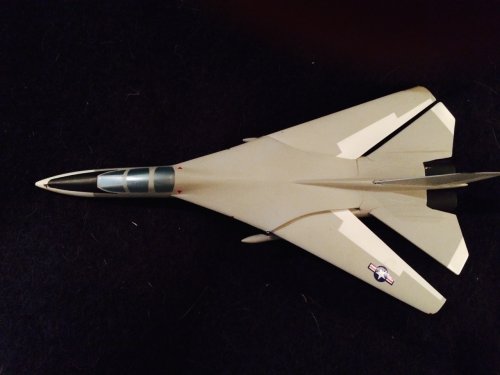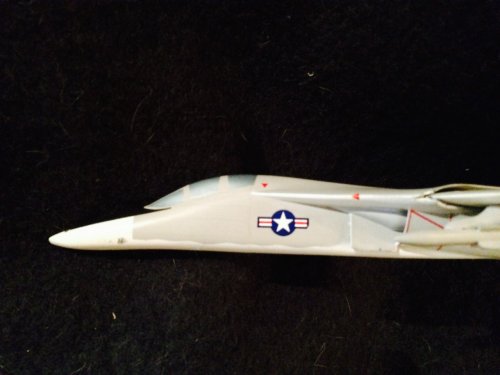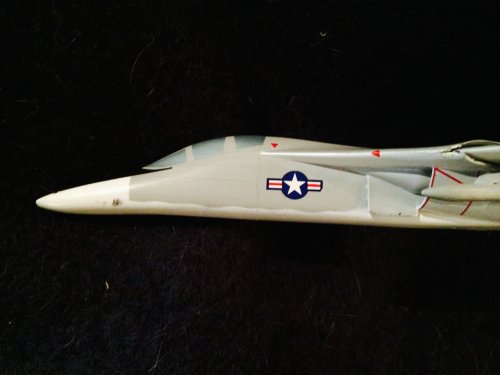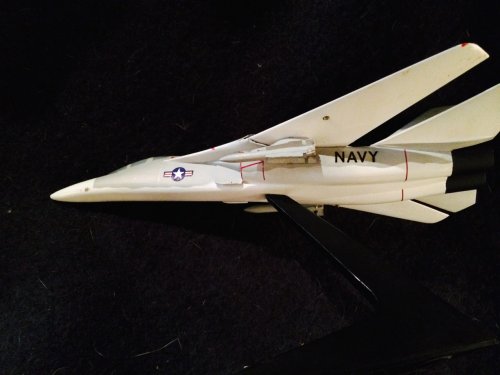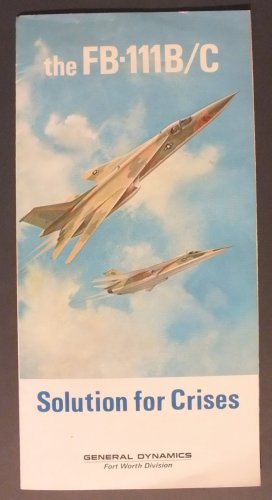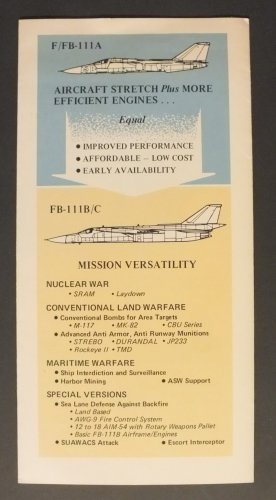65 FB-111As to be modified to FB-111H, and/or up to 100 FB-111Hs built. Initial funding for two prototypes. $380m for prototype development, with a total program cost of $7000m, for a unit price of $42.1m (less than half the unit price of the B-1) for a 167 aircraft fleet.
43 percent commonality with structure, 79 percent of subsystems of the basic aircraft. Main features are the stretched fuselage and the use of F101 engines. Bomb bay size almost doubled, to allow 4 or 5 nuclear weapons instead of 2. External hardpoints increased to 12, 6 on the wings and 6 on the sides and bottoms of the air intakes. Two wing hardpoints fixed, usable at minimum sweep only. Maximum wing sweep is reduced to 60 deg, with maximum speed reduced to Mach 1.6.
Avionics suite include GE APQ-144 radar, modified APQ-134 TFR, APN-200 Doppler, AJN-16 and SKN-2400 INS, dual IBM CP-2A computers, AN/ALQ-131 band 1 & 2 jammers, AN/ALQ-137 jammer, AN/ALQ-153/154 tail warning, AN/ALR-62 RWR, AN/ALE-28 chaff/flare dispensers.
Engine: 2 x F101-GE turbofans, rated at 17,000lb st dry and 30,000lb st afterburning.
Max speed: Mach 1.6 above 36,000ft, cruise speed Mach 0.75, low altitude penetration speed Mach 0.85 at 200 ft, takeoff distance 6,700ft, high altitude ferry range 6,900 miles.
Empty weight: 30,408 lb
MTOW: 140,000lb
Max in-flight gross weight: 156,000lb (after refuelling)
Span: 70ft spread, 44ft 10in swept
Length: 88ft 2.5in
Height: 22ft
Wing area: 550 ft
Armament: 5 nuclear bombs, 4 AGM-69A SRAM, 3 ALCM-A in the internal bay. 10 weapons on 12 hardpoints.

